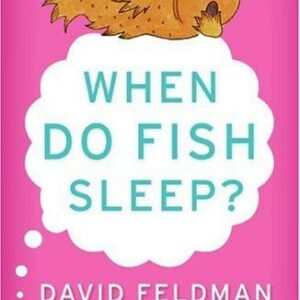What Kingdom
$18.00
| Title | Range | Discount |
|---|---|---|
| Trade Discount | 5 + | 25% |
- Description
- Additional information
Description
“An incredibly moving and gripping novel . . . so sure-footed, clear, vibrating, like chiffon or a cigarette.” — Olga Ravn
An incandescent debut about young adults learning how to care for themselves — from within the limits of the psychiatric system
Perfect for fans of Tove Ditlevsen and devotees of Sylvia Plath
In honest, crackling investigations of the psychiatric system and the young people trying to find their way, Gråbøl’s soaring debut offers a critique of institutionalization and an urgent recalibrating of the language and conceptions of care.
“I’m not inarticulate, but I leave language to the room around me,” says Fine Gråbøl’s nameless narrator as she dreams of furniture flickering to life in the room she occupies at a temporary psychiatric care unit for young adults. A chair that greets you, or shiny tiles of floor that follow a peculiar grammar of their own. Our narrator is obsessed with the way items rise up out of their thingness, assuming personalities and private motives. She also cannot sleep, and practices her daily routines with the urgency of survival – peeling a carrot, drinking prune juice – all an acutely calibrated exploration into having a home.
Structured as a series of intimate vignettes like those of Olga Ravn, What Kingdom thrums with the swirling voices of this shared home. Hector blares Michael Jackson from the recreation room and recalls a past in Peru when his psychoses were treated with exorcism. The town would shake the devil out of his small, teenage body before he was relocated to Denmark. Or Marie, who has lived in the temporary unit since she was eighteen, has no idea that her mother lives just four floors below in a permanent care unit.
Echoing the aching writings of Janet Frame on electroconvulsive therapy, or Linda Boström Knausgård’s mythical meditations on silence and mental health, Fine Gråbøl renders a delicate and deep uncoupling from the world.”Before the relative independence of the residential facility, our narrator was locked in the psychiatric ward of a hospital and subjected to repeated electroconvulsive therapy . . . Gråbøl’s eye is unsparing and convincing, her prose vivid and alive . . . The narrator doesn’t deny that she needs help . . . But at the same time, she has questions: ‘Why doesn’t anyone wonder about the line between trauma and treatment?…about the relationship between compulsion and compliance?…care and abuse?…between surrender and obliteration?'” — Kirkus Reviews, starred review
“It has been a privilege to read this extraordinary work. The unnamed narrator’s absolute vulnerability is transformed into compelling beauty by the authority and precision of her language. I love the pace of the writing. How, after a passage in which the raw pain and hurt break through into anger, a sentence of clear transcendent poetry can follow. The perfect emotional control is astonishing. It is a very exposing, brave book. It lays open the narrator’s frustration at her inability to be heard, to be considered, within the cold strictures of the institution where she passes her days: “the basis of our lives is powerlessness plus capitulation.” I was riveted by the attention to detail – it demands our attention, in return; the objective way the narrator perceives the confined world she lives in, without a trace of self-pity, compels us to know she is speaking the truth. There is an urgent need for the system to be changed, for an individual to be listened to, not just dealt with. This book makes us listen.” – Celia Paul, author of Self-Portrait and Letters to Gwen John
“An incredibly moving and gripping novel . . . so sure-footed, clear, vibrating, like chiffon or a cigarette.”
— Olga Ravn, author of The Employees and My Work
“Rendered through recursion and fragmentation, the wholeness of What Kingdom is revealed like a jigsaw puzzle whose pieces are kept in a shoebox and turns out to have no edges. Somehow both warm and cool, Fine Gråbøl’s keenly observant prose suggests the affinities between phantasm, phenomena and what lies between. Bureaucracy and self-inflicted burns—the banal and the brutal—are reported with the same attenuated precision. Only an unreliable narrator could be trusted with this story. This book has gotten inside me, a guide for unexplored rooms and corridors.”
— Anne de Marcken, author of It Lasts Forever and Then It’s Over
“This debut novel centers around the minute day-to-days of a patient in a mental hospital. Gråbøl, a Danish poet beloved by the likes of Olga Ravn and Celia Paul, weaves an intricate picture of a life lived under rules and restraint by creating a text that is simultaneously demure and porous, with an elliptical structure . . . This book is especially exciting because its publisher, Archipelago, rarely puts out debut fiction, and the cover features artwork by Karoline Ebbesen, a Danish painter who was admitted to a mental asylum in 1885 and lived there for the next 50 years.” — Dilara O’Neil, Vulture
“It has been a privilege to read this extraordinary work. The unnamed narrator’s absolute vulnerability is transformed into compelling beauty by the authority and precision of her language. I love the pace of the writing. How, after a passage in which the raw pain and hurt break through into anger, a sentence of clear transcendent poetry can follow. The perfect emotional control is astonishing. It is a very exposing, brave book. It lays open the narrator’s frustration at her inability to be heard, to be considered, within the cold strictures of the institution where she passes her days: “the basis of our lives is powerlessness plus capitulation.” I was riveted by the attention to detail – it demands our attention, in return; the objective way the narrator perceives the confined world she lives in, without a trace of self-pity, compels us to know she is speaking the truth. There is an urgent need for the system to be changed, for an individual to be listened to, not just dealt with. This book makes us listen.” – Celia Paul, author of Self-Portrait and Letters to Gwen John
“Gråbøl offers a searing critique on the way the government treats the mentally ill . . . Our narrator is preoccupied with the furniture . . . For her, chairs “address the night,” and this is a vital observation. Our protagonist notices everything. While we never get her name, the reader understands her survival is dependent on discovering herself through these inanimate objects . . . What Kingdom is a wonderful debut . . . a modern day classic; one I will return to time and time again.” — Courtenay Schembri Gray, The Maple Moon
What Kingdom is Danish writer Fine Gråbøl’s (b. 1992) debut novel. She has previously published a collection of poetry, Knoglemarv lavendel (Bone-marrow Lavender, 2018), together with the poetry collective BMS – consisting of Dorte Limkilde, Mette Kierstein, Ronja Johansen, and Gråbøl. What Kingdom is inspired by the author’s own experiences with psychiatric care and has been called “such a strong debut, so sure-footed, clear, vibrating, like chiffon or a cigarette” (Olga Ravn).
Martin Aitken is the acclaimed translator of numerous novels from Danish and Norwegian, including works by Karl Ove Knausgaard, Peter Høeg, Jussi Adler-Olsen, and Pia Juul. In 2012, he was awarded the American-Scandinavian Foundation’s Nadia Christensen Translation Prize, and in 2019 he was awarded the PEN Translation Prize for his translation of Love by Hanne Ørstavik. His translation of Ørstavik’s Ti Amo was named a Financial Times Best Book of the Year.Sweet Corridor Law
Of all the hours of day and night I like the earliest morning best. That space of time that’s neither one nor the other. When 5 am comes round I can let my shoulders drop and see the day in front of me. I can arrange my thoughts in rows, and manage them like that. But at night they tumble like gulls around stale bread in a greasy town. I hear their wings flap, but I can’t predict their course. Waheed keeps 50 Cent turned up loud in the night. Perhaps that’s how he tries to trick his thoughts into changing direction. Often, the thud of the bass makes the floor in my room vibrate. He sleeps all day, wakes up around 10 pm then turns his music on. The walls are so thin you’d think we were sharing the same room or a dormitory. I got myself some earplugs and have complained to the evening shift. If I run into him in the corridor in the daytime, I fume at him. He skips past, gives me an adoring look and says hi. I say hi back, but my eyes are looking right past him at a point somewhere behind his head. I try to walk in as straight a line as I can. I don’t like sideways movements, the same as I don’t like sudden emotional leaps, a car driving over a football in the street. My daily routines are crucial to my survival. Heart in heart, where are we going.
We’ve been accommodated in this building, high above the ground, in rooms containing many different objects. I can hear what Waheed’s doing on the floor below me more than what Sara’s doing in the room next door. I never hear Lasse, Hector or Marie, but their rooms are further down the corridor. We’ve been assigned accommodation in accordance with §107, a temporary accommodation offer for young adults between the ages of 18 and 30. The other floors, from first to fourth, come under §108, permanent accommodation. I have no plants. Out of principle I own nothing that might die. Which is a challenge, because what lives for ever. I don’t know. Sara owns loads of stuff and often needs help from the staff to sort it all out, tidy up, put things in their proper places. Her shoes are lined up in a row by the door; she has a beige-coloured bedspread with a pattern on it. I don’t know what Waheed’s room looks like. I imagine a settee, a thick rug. All I know is he’s got a speaker, or more likely two. The floors of the residential facility are much the same: between five and ten accommodation units, an office for the staff, a communal recreation room, a communal kitchen, balconies for the smokers, shiny linoleum flooring. The same number of whiteboards for everyone. The corridor of the young people’s section has been nicened up with a Lord of the Rings poster, an armchair and some potted palms. Not much furniture besides that, in the recreation room or the kitchen. Furniture can be noisy, so here we do without.
And because I never sleep at night and never sleep in the day either, I often look in on the night shift on the ground floor, where you can get a cup of tea or smoke a cigarette with other sleepless residents from all floors of the building. Most of those who work the night shift have been given a course in NADA, a kind of acupuncture where you get about ten needles stuck in your ears, in the back of your neck, sometimes in your little finger too, as an alternative to benzodiazepines, for example, a depressant. The night shift can unlock the fitness room for you as well, where besides the fitness apparatus there’s a massage chair. Hardly anything ever happens at night, not really, most of the residents tend to be asleep and the ones in need of extra support in the form of medication or other physical help have already been worked into the rosters. Often there’ll be four members of staff on the night shift, all with alarms in their belts, a different kind of social pedagogue than the ones who work days. They possess a hardness on the outside that shouldn’t be mistaken for aloofness or an unsympathetic mindset, it’s more an expression of practised care. Although I can go down and visit the night shift on the ground floor, it’s not supposed to be a drop-in centre; the night is for sleepers and as far as possible I have to adapt my rhythm to respect that. If we need NADA, all we have to do is phone and they’ll come up to your room. I like Mark the best, he’s strong and good-looking, with kind blue eyes. Mark used to be a boxer and comes from Kalundborg; he’s bald and wears a long beard and the sort of clothes that are meant for the outdoor life. If Mark isn’t on the shift, I won’t have anyone else come up. Occasionally I’ll fall asleep with the needles in, but then Mark will come back during the night and remove them one by one without waking me up. I might sometimes wake up, but if I do I never let on and instead savour the gentle way he lifts my head, his careful fingers as they extract the needles, the little dabs with cotton wool behind my ears if I happen to bleed when he takes them out; the meticulousness that can only be shown to someone sleeping, that careful responsibility.
When Mark’s on the shift we drink café crème from the machine or do boxing in the fitness room. I’ve got a lot of anger and noise inside my body, it’s the reason I don’t much care for the recreation room on the ground floor with all its stuff, its plants and games and books. I liked the rooms at the hospital better, there was hardly anything in them, but I didn’t like the smell much there, and at the end of the day smell is what settles it; it’s not that bad at the residential facility. The recreation room has been done out a bit like a café. The sound of the industrial kitchen’s dishwasher is almost constant. The facility, which is to say the permanent living units as well as the temporary ones belonging to the young people’s section, is a kind of exploration into having a home. In that sense, the recreation room is like the beginnings of a theatre piece, the outline of a stage design. Mark will open the kitchen for me at night, if I want. I hardly ever do. I keep most of the food items I need in my room: bread rolls, red fruit yoghurt, honey. If I do need to use the kitchen, it’ll only be to cook a packet of tortellini.
I’ve lain down flat on the floor. Above me the ceiling hangs suspended like a fluid-filled membrane, density pulls me down and I roll over onto my stomach, drag myself across the floor into the bathroom and activate the alarm. I can’t remember how to speak, I don’t know what you’re supposed to do, it’s as if my voice has shut down completely just when I need it. The staff remove my top, it’s soaked through with sweat and I’m shaking, my eyes blur when I look at the bathroom ceiling, the ambulance is coming. They lift up one of my arms, then the other, and note the way my arms no longer belong to the rest of my body, as if they were never supposed to; they drop limply. Come on, move, someone says, you know I’m standing here. The beam of the little torch stabs at my eyes. They bring a stretcher, but it’s voluntary, they say, it’s completely up to me. My face’s connections with the lino. Only after they’ve gone, only after they’ve all gone, am I able to find a little peace in this room I live in.
You maybe don’t notice straight away that there are five single rooms on the left-hand side when you step out of the lift into the long corridor. A room for each of Lasse, Sara, Hector, Marie and me. The lino on the floor throws back the harsh strip lighting. You hear no voices, no electric dialogues from any TV, no solid footsteps sounding on the floor; no glowing cigarettes on the balcony. I have no secrets and therefore no history. The lights in the corridor are controlled by motion sensors. I can tell by the lights coming on, and by the mechanical hum of the lamps, whenever someone’s coming, even before I hear them. My contact person’s early today.
Thomas is sitting typing at the oblong keyboard in front of the computer screen in his office. His office is at the top end of the corridor, close to the fire exit, diagonally opposite my room. Through the small window facing the rear yard I can see someone beating a rug. Purple lilacs blossom nearby. Everything has to be documented, those are the rules, he says, and throws up his hands, palms turned skywards, shoulders hunched to his ears. Sorry. He wipes the beginnings of a runny nose on the back of his hand, types some more, looks up at me, swivels. We need to draw up your action plan. Write some things down that could make your daily living easier. Thomas, with his dark blue eyes and black woolly sweater. Thomas, with his strong hands and New Balance trainers, a wind-up watch around his right wrist on a strap of cocoa-coloured leather, a dark spot below the moist rim of his eye, a tousle of loose brown curls. He’s the section leader here on the fifth floor, and my contact person. They were short-staffed when I moved in, so he had to step up. He prefers being on the ground to administrative duties, I heard him say so to Lars one day, I was listening through the office door. You go from hospital to residential facility, from female care workers to male, from nursing to social education; from centralised laundry system and night lights to conflict-ready bodies and communal activities; you adjust. I want to learn how to sleep, I say. Okay, says Thomas, I probably won’t be able to help you with that, but mention it to Helle when she comes in on Thursday, and he crosses his left leg over his right, his knee against the armrest of the swivel chair. A poster for Bob Dylan’s Oh Mercy hangs on the wall above his head. He sips his coffee. But I can help you find out what to do when you’re awake. He puts the flat of his hand on top of the leather-bound diary as if to consider something, but removes it again. He holds the mug between the fingertips of both hands.
At night we are a concoction, disparate elements of the house brought together; in the daytime those of us from the fifth floor are a small, isolated unit. Yesterday afternoon a folk duo performed an intimate gig in the café, only no one had bothered to tell anyone from the young people’s section. No doubt they thought it wasn’t our scene; no doubt they thought that too much consorting with the other floors leads only to intra-institutional contamination, light-shy miens. The building we live in was originally an old people’s home. In the mid-00s it was restructured to house and care for people suffering from the most serious psychiatric disorders, people who needed a home, stable accommodation with round-the-clock support. The residents of the old people’s home were relocated, the communal areas on the ground floor were given a bright lick of paint and various books were sourced and put on some old brown shelves. A visual artist was commissioned to paint colourful abstract motifs on the white walls by the entrance. The ground-floor café was leased to new operators on the promise of them serving good, healthy food on a daily basis. Indeed, everything possible was done to give the building a new lease of life, to usher in around one hundred adult residents belonging to all age groups, with very different, though equally stringent needs. The accommodation units on the first to fourth floors are allocated according to §108 of the Consolidation Act on Social Services: “The municipal council shall provide accommodation in facilities suitable for long-term accommodation for persons who, due to substantial and permanent impairment of physical or mental function, need extensive assistance for general day-to-day functions or care, attendance or treatment, where such needs cannot be addressed in any other way.” People often suppose an institution’s efficiency has to do with its size: the bigger the better. Superhospitals, supermarkets, supercentres. This accommodation facility is no exception. Many §108 residents may find it hard to cope with the social demands of the place; whenever they step out of their rooms they’ll encounter other residents or care workers. On the other hand, isolation can have very serious impacts, and residential centres are built on social foundations. This ambiguity is ever-present, an underlying hum in the daily lives of those who inhabit the first to fourth floors, but isn’t nearly as intrusive to us on the fifth, the reason being found in a simple sociopolitical distinction: our accommodation is provided according to §107, concerning temporary accommodation. We’re not meant to be here for ever. We’re meant to learn skills to take with us when we leave. You could ask why the young people’s section was put in the former old people’s home in the first place and not in a building on its own, separated from §108, if this distinction was so necessary. You could ask why all these sick people had to be put together under the same precarious roof, and you wouldn’t be surprised by the answer…CA
Additional information
| Weight | 6.2 oz |
|---|---|
| Dimensions | 0.4100 × 5.8500 × 6.7500 in |
| Imprint | |
| Format | |
| ISBN-13 | |
| ISBN-10 | |
| Author | |
| Audience | |
| BISAC | |
| Subjects | literary fiction, coming of age, realistic fiction, novels, chick lit, FIC076000, art, FIC043000, german, book club, mental illness, diary, self discovery, Friendship, meditations, contemporary romance, translation, health care, dutch, adolescence, psychiatry, fiction books, books fiction, vignettes, psychiatric, education, inspirational, feminism, culture, mental health, psychology, eating disorders, spirituality, inspiration, running, therapy, relationship, philosophy, health, yoga, trauma, music, biology, classic, romance, love, drama, fiction, Animals |











